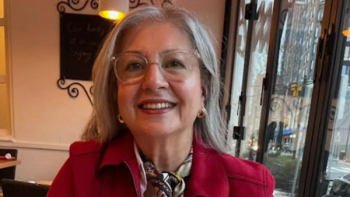
What Your Doctor Needs to Know
Transcript:Edward S. Kim, MD: During these first couple of visits, especially the first one, you’re meeting with your oncologist. It is very overwhelming because there’s a lot of information that needs to be discussed. And, unfortunately, you have to make decisions. It’s almost like the first house you look at where you’re now going back to your Realtor’s office and you have to make a decision and sign papers to do things.
Unfortunately, time is of the essence here. We are dealing with cancer, and we want to make sure we’re doing things properly and comprehensively. They’ll go over, first and most importantly, what your diagnosis is. If it is lung cancer and it is a non—small-cell lung cancer, that means it’s probably either an adenocarcinoma or a squamous cell carcinoma.
The next thing that will be discussed is staging. Is it stage I, II, III, or IV? There are 4 stages. Unfortunately, many of the patients who are diagnosed with lung cancer do fall in the stage IV bucket, and that is the incurable bucket. Those are some of the hardest decisions and hardest discussions we have with folks early on. Many can already sense that when they get the results of their scans, and know it has spread outside of the lung—so it’s not a huge shock when that occurs. But it does mean that we’re not going to be doing surgery, or we’re not going to be doing radiation, which are reserved for the earlier stages of lung cancer.
Mark A. Socinski, MD: Every oncologist has to get 2 things absolutely correct. They have to get the diagnosis correct. The diagnosis requires a biopsy of sufficient volume, or amount (if you will), so that you can look under the microscope and tell whether it’s small cell or it’s not small cell. We’ll talk in a little bit about when it’s not small cell. There are a number of molecular tests that we’re currently doing that are incredibly important. Molecular testing is part of the diagnosis, and you have to get that right in every lung cancer patient.
The second thing that every oncologist needs to get exactly right is the stage of the patient. The stage determines the treatment approach in all patients. We look at stage from the primary tumor in terms of its characteristics—mostly size. We look at it as to whether or not there are lymph nodes involved in the chest, and then we look to see if there’s any evidence of spread outside of the chest. The typical tests that people undergo is a chest and abdominal CT scan, and a PET scan. A PET scan, currently, is typically coordinated with a CT scan. And if beyond stage I, it’s important to also assess the brain. The state-of-the-art way to assess the brain is with an MRI. So that’s the standard tests that are done to evaluate for the stage of the patient.
Now, additional diagnostic maneuvers may need to be done to confirm lymph node involvement, or to confirm disease outside of the chest. For instance, if a patient reveals, on a PET scan, a single site outside the chest, I would generally biopsy that to make sure that the one site is actually spread of the disease and not something else. So I think that these are kind of the 2 things — diagnosis (including molecular testing), as well as the stage of the patient. And that really directs the path that you go down.
Transcript Edited for Clarity




